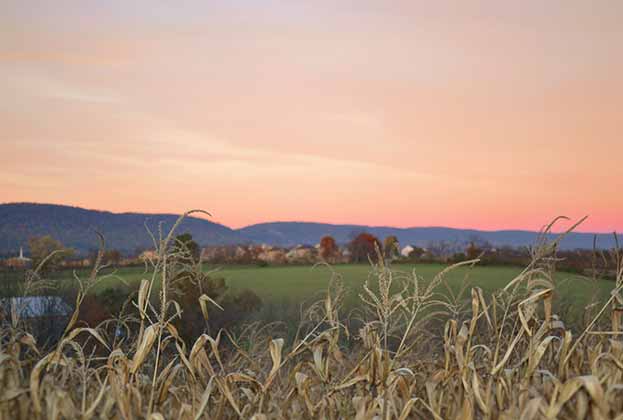Removing BPS could be the difference between profit and loss for many, so it is important to understand the full implications of the transition from BPS to ELMS
There have been voices calling for reform of the CAP for many years. Many of them have focused on the supposed impact that subsidy has on land values, arguing that removing it would reduce values and improve access to land for new entrants. For those operating farm businesses, the BPS bears no relation to the value of land, and instead acts as an annual lifeline – a guaranteed income regardless of management skill, trade arrangements or market performance.

At this time of broader trading uncertainty, public investment through the CAP helps to cushion the industry against volatility and offers a welcome degree of security. Farmers have planted seeds and planned for the next generation of livestock this year just like any other year, even though the end market for much of that produce may still change. However, AHDB research shows that removing BPS from farm accounts would be the difference between profit and loss for many. Equally, its research indicates that only the top 25% performing farm businesses will fare well under any Brexit scenario. On this analysis, removing BPS could be devastating.
At this time of broader trading uncertainty, public investment through the CAP helps to cushion the industry against volatility and offers a welcome degree of security
Savills Research
The Agriculture Bill 2018 announced a transition away from the BPS and also announced a new system of financial assistance for publicly valuable activities to be purchased via a new Environmental Land Management scheme (ELMS). For many around the industry, adopting a “wait and see” approach to accessing ELMS has seemed the logical thing to do. For businesses exposed to BPS to cover operating costs, this even may feel like the only viable course of action. However, there are at least three major reasons why “wait and see” is not the right approach.

1 First of all, we know that ELMS will be fundamentally different from the CAP in its policy intentions. Article 39 of the Treaty on the Functioning of the European Union sets out the five core policy objectives for the CAP, which include to “ensure a fair standard of living for the agricultural community, in particular by increasing the individual earnings of persons engaged in agriculture”.
So, at the moment, one of the key reasons the industry receives BPS is to support farm incomes. Direct payments to active farmers still account for around 75% of all CAP spend. It is crucial to note that in comparison, the Agriculture Bill contains no mention of income support at all. It simply sets out seven categories of public good for which financial assistance may be given. The removal of income support for farmers is the first necessary adjustment, as ELMS will be measured against environmental improvements, not farm income levels.
2 The second key reason why waiting for ELMS is not the right thing to do is because there is no clear idea over what the funding levels will be. So even if financial assistance under the Agriculture Bill is available, it might not be at the same level, and it is unlikely to be simply paid on an area basis. It will be conditional on environmental delivery, which will need to be supported by evidence that the money is actually achieving improvements in resource management.
3 Finally, ELMS as currently described is not conditional upon active farming, which opens up whole swathes of the country to environmental investment that have not previously accessed public money. Based on a simplistic assessment of “public goods”, it could be expected that upland and non-farmed areas are capable of delivering higher levels of biodiversity, water and carbon storage outcomes than lowland areas, potentially attracting higher levels of investment under ELMS. This is particularly the case as Defra has indicated that soil health is a private good that farmers should be delivering in their own best interests. On the other hand, public goods will be worth more if delivered near centres of population, which may benefit lowland environments more.
It is clear that ELMS is not a direct or even indirect replacement for the BPS. It is an evolution of current countryside stewardship schemes and needs to be approached as such. Every farm needs to have a much greater focus on other means of mitigating volatility, including revisiting contracts, looking for collaboration and analysing costings. But also it is necessary that the adjustment is not borne by farms alone: market forces have already forced margins to be tight and market prices both upstream and downstream of farms will need to adjust to a new lack of liquidity at farm level. In the context of £24 billion agricultural spend in the UK and a £122 billion agri-food supply chain, the loss of £3 billion of BPS represents a not insignificant 2.1% of annual revenue. Shared through the supply chain, and with investments in productivity enabled by better contracts and supply chain security, the pain should be short-lived.
Transferring £3 billion or more of public investment to environmental delivery could be transformational for the UK countryside, but the whole farming industry, including the agricultural and food supply chain, needs to accept that the annual income support payment to farmers will be going first. The last approach that anyone should be doing is that of to “wait and see”.
Read the articles within Delivering Future Arable Performance below.
.jpg)
.jpg)

.jpg)

.jpg)